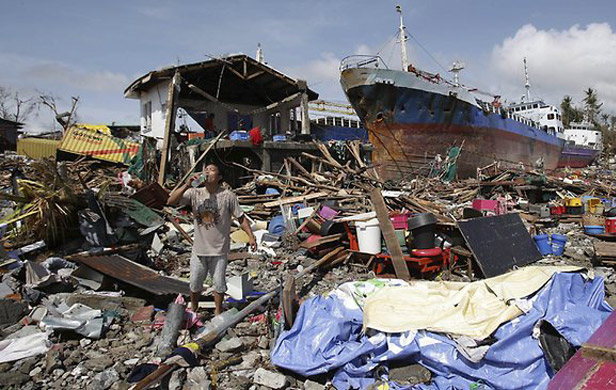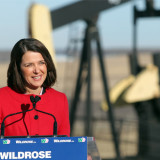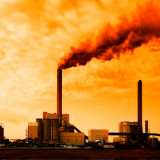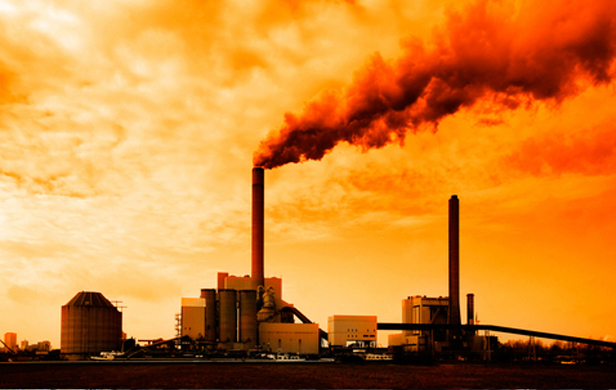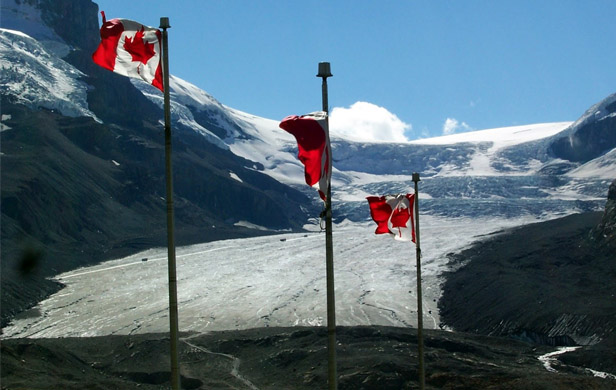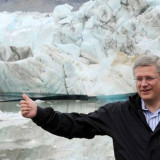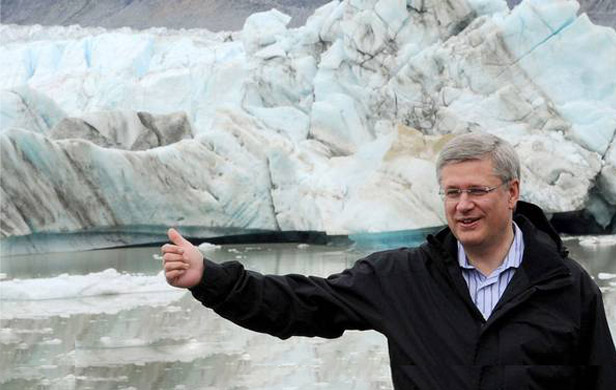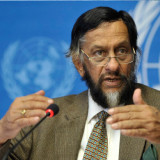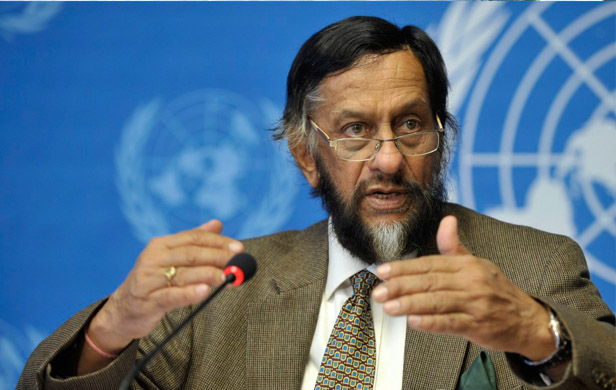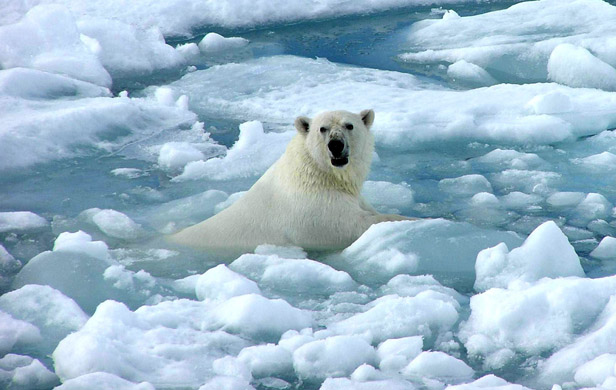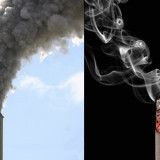Executive Summary from the World Energy Outlook 2013
The International Energy Agency’s authoritative World Energy Outlook provides an analysis of global energy markets highlighting the world’s energy and environmental challenges.
Orientation for a fast-changing energy world
[quote]Many of the long-held tenets of the energy sector are being rewritten.[/quote] Major importers are becoming exporters, while countries long-defined as major energy exporters are also becoming leading centres of global demand growth. The right combination of policies and technologies is proving that the links between economic growth, energy demand and energy-related CO2 emissions can be weakened. The rise of unconventional oil and gas and of renewables is transforming our understanding of the distribution of the world’s energy resources. Awareness of the dynamics underpinning energy markets is essential for decisionmakers attempting to reconcile economic, energy and environmental objectives. Those that anticipate global energy developments successfully can derive an advantage, while those that fail to do so risk making poor policy and investment decisions. This edition of the World Energy Outlook (WEO-2013) examines the implications of different sets of choices for energy and climate trends to 2035, providing insights along the way that can help policymakers, industry and other stakeholders find their way in a fast-changing energy world.
[quote]The centre of gravity of energy demand is switching decisively to the emerging economies, particularly China, India and the Middle East, which drive global energy use one-third higher. [/quote]In the New Policies Scenario, the central scenario of WEO-2013, China dominates the picture within Asia, before India takes over from 2020 as the principal engine of growth. Southeast Asia likewise emerges as an expanding demand centre (a development covered in detail in the WEO Special Report: Southeast Asia Energy Outlook, published in October 2013). China is about to become the largest oil-importing country and India becomes the largest importer of coal by the early 2020s. The United States moves steadily towards meeting all of its energy needs from domestic resources by 2035. Together, these changes represent a re-orientation of energy trade from the Atlantic basin to the Asia-Pacific region. High oil prices, persistent differences in gas and electricity prices between regions and rising energy import bills in many countries focus attention on the relationship between energy and the broader economy. The links between energy and development are illustrated clearly in Africa, where, despite a wealth of resources, energy use per capita is less than one-third of the global average in 2035. Africa today is home to nearly half of the 1.3 billion people in the world without access to electricity and one-quarter of the 2.6 billion people relying on the traditional use of biomass for cooking. Globally, fossil fuels continue to meet a dominant share of global energy demand, with implications for the links between energy, the environment and climate change.
[quote]As the source of two-thirds of global greenhouse-gas emissions, the energy sector will be pivotal in determining whether or not climate change goals are achieved.[/quote] Although some carbon abatement schemes have come under pressure, initiatives such as the President’s Climate Action Plan in the United States, the Chinese plan to limit the share of coal in the domestic energy mix, the European debate on 2030 energy and climate targets and Japan’s discussions on a new energy plan all have the potential to limit the growth in energy-related CO2 emissions. In our central scenario, taking into account the impact of measures already announced by governments to improve energy efficiency, support renewables, reduce fossil-fuel subsidies and, in some cases, to put a price on carbon, energy-related CO2 emissions still rise by 20% to 2035. This leaves the world on a trajectory consistent with a long-term average temperature increase of 3.6 °C, far above the internationally agreed 2 °C target.
Who has the energy to compete?
[quote]Large differences in regional energy prices have sparked a debate about the role of energy in unleashing or frustrating economic growth.[/quote] Brent crude oil has averaged $110 per barrel in real terms since 2011, a sustained period of high oil prices that is without parallel in oil market history. But unlike crude oil prices, which are relatively uniform worldwide, prices of other fuels have been subject to significant regional variations. Although gas price differentials have come down from the extraordinary levels seen in mid-2012, natural gas in the United States still trades at one-third of import prices to Europe and one-fifth of those to Japan. Electricity prices also vary, with average Japanese or European industrial consumers paying more than twice as much for power as their counterparts in the United States, and even Chinese industry paying almost double the US level. In most sectors, in most countries, energy is a relatively minor part of the calculation of competitiveness. But energy costs can be of crucial importance to energy-intensive industries, such as chemicals, aluminium, cement, iron and steel, paper, glass and oil refining, particularly where the resulting goods are traded internationally. Energy-intensive sectors worldwide account for around one-fifth of industrial value added, one-quarter of industrial employment and 70% of industrial energy use.
[quote]Energy price variations are set to affect industrial competitiveness, influencing investment decisions and company strategies.[/quote] While regional differences in natural gas prices narrow in our central scenario, they nonetheless remain large through to 2035 and, in most cases, electricity price differentials persist. In many emerging economies, particularly in Asia, strong growth in domestic demand for energy-intensive goods supports a swift rise in their production (accompanied by export expansion). But relative energy costs play a more decisive role in shaping developments elsewhere. The United States sees a slight increase in its share of global exports of energy-intensive goods, providing the clearest indication of the link between relatively low energy prices and the industrial outlook. By contrast, the European Union and Japan both see a strong decline in their export shares – a combined loss of around one-third of their current share.
Searching for an energy boost to the economy
[quote]Countries can reduce the impact of high prices by promoting more efficient, competitive and interconnected energy markets.[/quote] Cost differentials between regional gas markets could be narrowed further by more rapid movement towards a global gas market. As we examine in a Gas Price Convergence Case, this would require a loosening of the current rigidity of liquefied natural gas (LNG) contracting structures and oil-indexed pricing mechanisms, spurred by accelerated gas market reforms in the Asia-Pacific region and LNG exports from North America (and an easing of costs for LNG liquefaction and shipping). There is also potential in some regions, notably China, parts of Latin America and even parts of Europe, to replicate at smaller scale the US success in developing its unconventional gas resources, though uncertainty remains over the quality of the resources, the costs of their production and, in some countries, public acceptance for their development.
[quote]A renewed focus on energy efficiency is taking hold and is set to deliver benefits that extend well beyond improvements in competitiveness.[/quote] Notable policies introduced over the past year include measures targeting efficiency improvements in buildings in Europe and Japan, in motor vehicles in North America and in air conditioners in parts of the Middle East, and energy pricing reforms in China and India. As well as bringing down costs for industry, efficiency measures mitigate the impact of energy prices on household budgets (the share of energy in household spending has reached very high levels in the European Union) and on import bills (the share of energy imports in Japan’s GDP has risen sharply). But the potential for energy efficiency is still far from exhausted: two-thirds of the economic potential of energy efficiency is set to remain untapped in our central scenario.
[quote]Action is needed to break down the various barriers to investment in energy efficiency.[/quote] This includes phasing out fossil-fuel subsidies, which we estimate rose to $544 billion worldwide in 2012. Enhancing energy competitiveness does not mean diminishing efforts to tackle climate change. The WEO Special Report: Redrawing the Energy-Climate Map, published in June 2013 identified four pragmatic measures – improving efficiency, limiting the construction and use of the least-efficient coal-fired power plants, minimising methane emissions in upstream oil and gas, and reforming fossil-fuel subsidies – that could halt the increase in emissions by 2020 without harming economic growth. This package of measures would complement the developments already envisaged in our central scenario, notably the rise in deployment of renewable energy technologies. Governments need, though, to be attentive to the design of their subsidies to renewables, which surpassed $100 billion in 2012 and expand to $220 billion in 2035. As renewables become increasingly competitive on their own merits, it is important that subsidy schemes allow for the multiple benefits of low-carbon energy sources without placing excessive burdens on those that cover the additional costs. A carefully conceived international climate change agreement can help to ensure that the energy-intensive industries in countries that act decisively to limit emissions do not face unequal competition from countries that do not.
Light tight oil shakes the next ten years, but leaves the longer term unstirred
[quote]The capacity of technologies to unlock new types of resources, such as light tight oil (LTO) and ultra-deepwater fields, and to improve recovery rates in existing fields is pushing up estimates of the amount of oil that remains to be produced. But this does not mean that the world is on the cusp of a new era of oil abundance.[/quote] An oil price that rises steadily to $128 per barrel (in year-2012 dollars) in 2035 supports the development of these new resources, though no country replicates the level of success with LTO that is making the United States the largest global oil producer. The rise of unconventional oil (including LTO) and natural gas liquids meets the growing gap between global oil demand, which rises by 14 mb/d to reach 101 mb/d in 2035, and production of conventional crude oil, which falls back slightly to 65 mb/d.
[quote]The Middle East, the only large source of low-cost oil, remains at the centre of the longer-term oil outlook.[/quote] The role of OPEC countries in quenching the world’s thirst for oil is reduced temporarily over the next ten years by rising output from the United States, from oil sands in Canada, from deepwater production in Brazil and from natural gas liquids from all over the world. But, by the mid-2020s, non-OPEC production starts to fall back and countries in the Middle East provide most of the increase in global supply. Overall, national oil companies and their host governments control some 80% of the world’s proven-plus-probable oil reserves.
[quote]The need to compensate for declining output from existing oil fields is the major driver for upstream oil investment to 2035.[/quote] Our analysis of more than 1 600 fields confirms that, once production has peaked, an average conventional field can expect to see annual declines in output of around 6% per year. While this figure varies according to the type of field, the implication is that conventional crude output from existing fields is set to fall by more than 40 mb/d by 2035. Among the other sources of oil, most unconventional plays are heavily dependent on continuous drilling to prevent rapid field-level declines. Of the 790 billion barrels of total production required to meet our projections for demand to 2035, more than half is needed just to offset declining production.
[quote]Demand for mobility and for petrochemicals keeps oil use on an upward trend to 2035, although the pace of growth slows.[/quote] The decline in oil use in OECD countries accelerates. China overtakes the United States as the largest oil-consuming country and Middle East oil consumption overtakes that of the European Union, both around 2030. The shifting geography of demand is further underlined by India becoming the largest single source of global oil demand growth after 2020. Oil consumption is concentrated in just two sectors by 2035: transport and petrochemicals. Transport oil demand rises by 25% to reach 59 mb/d, with one-third of the increase going to fuel road freight in Asia. In petrochemicals, the Middle East, China and North America help push up global oil use for feedstocks to 14 mb/d. High prices encourage efficiency improvements and undercut the position of oil wherever alternatives are readily available, with biofuels and natural gas gaining some ground as transport fuels.
The great migration in oil refining and trade
[quote]Major changes in the composition of oil supply and demand confront the world’s refiners with an ever-more complex set of challenges, and not all of them are well-equipped to survive.[/quote] Rising output of natural gas liquids, biofuels and coal- or gas-to-liquids technologies means that a larger share of liquid fuels reaches consumers without having to pass through the refinery system. Refiners nonetheless need to invest to meet a surge of more than 5 mb/d in demand for diesel that is almost triple the increase in gasoline use. The shift in the balance of oil consumption towards Asia and the Middle East sees a continued build-up of refining capacity in these regions; but, in many OECD countries, declining demand and competition in product export markets intensify pressure to shut capacity. Over the period to 2035, we estimate that nearly 10 mb/d of global refinery capacity is at risk, with refineries in OECD countries, and Europe in particular, among the most vulnerable. The new geography of demand and supply means a re-ordering of global oil trade flows towards Asian markets, with implications for co-operative efforts to ensure oil security. The net North American requirement for crude imports all but disappears by 2035 and the region becomes a larger exporter of oil products. Asia becomes the unrivalled centre of global oil trade as the region draws in – via a limited number of strategic transport routes – a rising share of the available crude oil. Deliveries to Asia come not only from the Middle East (where total crude exports start to fall short of Asian import requirements) but also from Russia, the Caspian, Africa, Latin America and Canada. New export-oriented refinery capacity in the Middle East raises the possibility that oil products, rather than crude, take a larger share of global trade, but much of this new capacity eventually serves to cater to increasing demand from within the region itself.
The power sector adjusts to a new life with wind and solar
[quote]Renewables account for nearly half of the increase in global power generation to 2035, with variable sources – wind and solar photovoltaics – making up 45% of the expansion in renewables. [/quote]China sees the biggest absolute increase in generation from renewable sources, more than the increase in the European Union, the United States and Japan combined. In some markets, the rising share of variable renewables creates challenges in the power sector, raising fundamental questions about current market design and its ability to ensure adequate investment and long-term reliability of supply. The increase in generation from renewables takes its share in the global power mix above 30%, drawing ahead of natural gas in the next few years and all but reaching coal as the leading fuel for power generation in 2035. The current rate of construction of nuclear power plants has been slowed by reviews of safety regulations, but output from nuclear eventually increases by two-thirds, led by China, Korea, India and Russia. Widespread deployment of carbon capture and storage (CCS) technology would be a way to accelerate the anticipated decline in the CO2 emissions intensity of the power sector, but in our projections only around 1% of global fossil fuel-fired power plants are equipped with CCS by 2035.
Economics and policies, in different doses, are key to the outlook for coal and gas
[quote]Coal remains a cheaper option than gas for generating electricity in many regions, but policy interventions to improve efficiency, curtail local air pollution and mitigate climate change will be critical in determining its longer-term prospects.[/quote] Policy choices in China, which has outlined plans to cap the share of coal in total energy use, will be particularly important as China now uses as much coal as the rest of the world combined. In our central scenario, global coal demand increases by 17% to 2035, with two-thirds of the increase occurring by 2020. Coal use declines in OECD countries. By contrast, coal demand expands by one-third in non-OECD countries – predominantly in India, China and Southeast Asia – despite China reaching a plateau around 2025. India, Indonesia and China account for 90% of the growth in coal production. Export demand makes Australia the only OECD country to register substantial growth in output.
[quote]Market conditions vary strikingly in different regions of the world, but the flexibility and environmental benefits of natural gas compared with other fossil fuels put it in a position to prosper over the longer term.[/quote] Growth is strongest in emerging markets, notably China, where gas use quadruples by 2035, and in the Middle East. But in the European Union, gas remains squeezed between a growing share of renewables and a weak competitive position versus coal in power generation, and consumption struggles to return to 2010 levels. North America continues to benefit from ample production of unconventional gas, with a small but significant share of this gas finding its way to other markets as LNG, contributing – alongside other conventional and unconventional developments in East Africa, China, Australia and elsewhere – to more diversity in global gas supply. New connections between markets act as a catalyst for changes in the way that gas is priced, including more widespread adoption of hub-based pricing.
Brazil is at the leading edge of deepwater and low-carbon development
[quote]Brazil, the special focus country in this year’s Outlook, is set to become a major exporter of oil and a leading global energy producer.[/quote] Based mainly on a series of recent offshore discoveries, Brazil’s oil production triples to reach 6 mb/d in 2035, accounting for one-third of the net growth in global oil production and making Brazil the world’s sixth-largest producer. Natural gas production grows more than five-fold, enough to cover all of the country’s domestic needs by 2030, even as these expand significantly. The increase in oil and gas production is dependent on highly complex and capital-intensive deepwater developments, requiring levels of upstream investment beyond those of either the Middle East or Russia. A large share of this will need to come from Petrobras, the national oil company, whose mandated role in developing strategic fields places heavy weight on its ability to deploy resources effectively across a huge and varied investment programme. Commitments made to source goods and services locally within Brazil add tension to a tightly stretched supply chain.
[quote]Brazil’s abundant and diverse energy resources underpin an 80% increase in its energy use, including the achievement of universal access to electricity.[/quote] Rising consumption is driven by the energy needs of an expanding middle class, resulting in strong growth in demand for transport fuels and a doubling of electricity consumption. Meeting this demand requires substantial and timely investment throughout the energy system – $90 billion per year on average. The system of auctions for new electricity generation and transmission capacity will be vital in bringing new capital to the power sector and in reducing pressure on end-user prices. The development of a well-functioning gas market, attractive to new entrants, can likewise help spur investment and improve the competitive position of Brazilian industry. A stronger policy focus on energy efficiency would ease potential strains on a rapidly growing energy system. Brazil’s energy sector remains one of the least carbon-intensive in the world, despite greater availability and use of fossil fuels. Brazil is already a world-leader in renewable energy and is set to almost double its output from renewables by 2035, maintaining their 43% share of the domestic energy mix. Hydropower remains the backbone of the power sector. Yet reliance on hydropower declines, in part because of the remoteness and environmental sensitivity of a large part of the remaining resource, much of which is in the Amazon region. Among the fuels with a rising share in the power mix, onshore wind power, which is already proving to be competitive, natural gas and electricity generated from bioenergy take the lead. In the transport sector, Brazil is already the world’s secondlargest producer of biofuels and its production, mainly as sugarcane ethanol, more than triples. Suitable cultivation areas are more than sufficient to accommodate this increase without encroaching on environmentally sensitive areas. By 2035, Brazilian biofuels meet almost one-third of domestic demand for road-transport fuel and its net exports account for about 40% of world biofuels trade.
Read More – World Energy Outlook 2013


